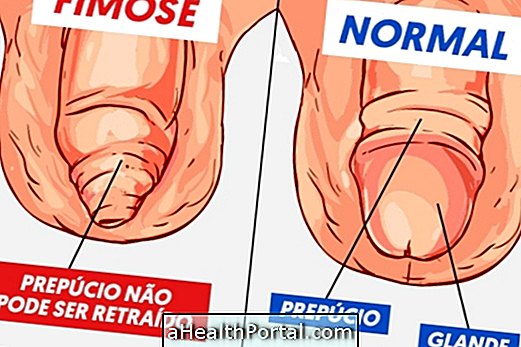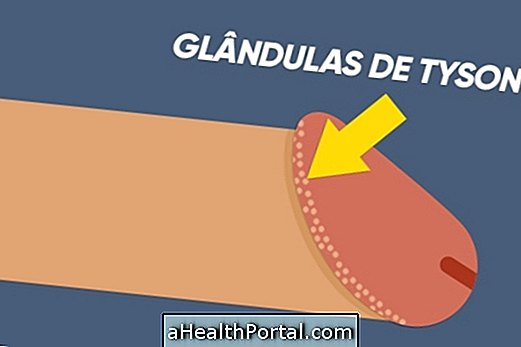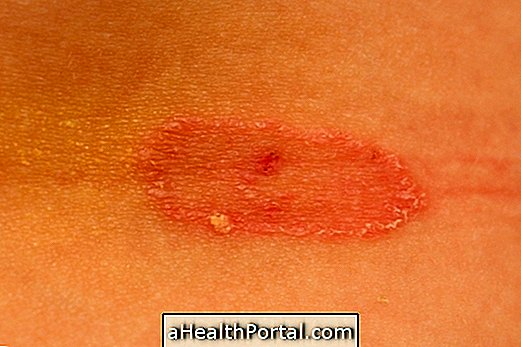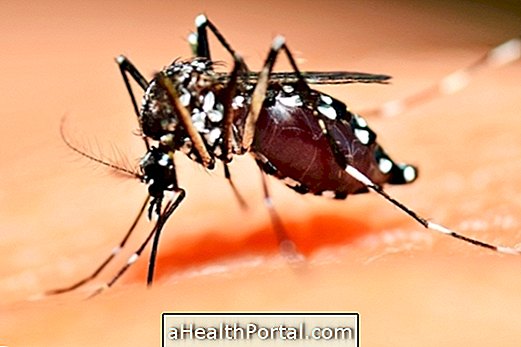Fimosis is the inability to expose the glans, terminal part of the penis, because the skin that covers it does not have sufficient opening. This condition is common in infants and tends to disappear, in most cases up to 1 year of age, to a lesser extent up to 5 years or only at puberty, without the need for specific treatment, however, when the skin does not give over time, it may be necessary to use a specific ointment or have surgery.
There are 2 types of male phimosis:
- Physiological phimosis: it is the most common condition, which is present from birth;
- Phimosis secondary: may occur at any stage of life, and occurs after a picture of infection, or local trauma, for example.
In some cases the skin is so tight that even urine can get trapped inside the skin, increasing the risk of urinary tract infection. Phimosis can cause complications such as difficulty cleaning the area, increased risk of urinary tract infection, pain in intercourse, increased propensity to have an STD, HPV or penile cancer, and greatly increase the risk of developing paraphimosis, which is when the foreskin gets stuck and does not cover the glans again.

How to know if it is phimosis
The only way to confirm the presence of phimosis is to try to retract the skin that covers the glans penis manually. When it is not possible to see the glans completely, this represents phimosis, which can be classified in 5 different degrees, although the degree is not very important to decide the best treatment, because it depends especially on the age of the boy. The first check for the presence of phimosis is made in the newborn baby, but it is part of all consultations with the pediatrician until the age of five.
In the case of secondary phimosis that can occur in adolescence or adulthood, the man himself can observe if there is any difficulty in the retraction of the skin, and if this is verified, it is recommended to consult with a urologist.
Treatments for phimosis
Infant phimosis has a cure and it is not always necessary to resort to specific treatments and, therefore, the pediatrician should evaluate the situation, since it can be naturally resolved until the child's 4 or 5 years. But if after that phase the phimosis persists, or in case of secondary phimosis, specific treatment is necessary, which can be done with:
1. Ointments for phimosis
Use of steroids based on corticosteroids that have anti-inflammatory, analgesic and antibiotic properties facilitating the skin to slide on the glans. The ointment indicated by the doctor should be applied twice a day for 1 month and may be enough to cure phimosis. Check out what and how to use some Ointments for phimosis.
2. Phimosis retraction exercise
Another possibility for boys over the age of 5 is to do an exercise to retract the foreskin of the foreskin without over-stressing or causing pain. For the exercise you should hold the penis with one hand and with the other apply the ointment and pull the skin back slowly, for 1 minute, 3 to 4 times a day. This exercise should not cause pain or discomfort, but it should be 'letting go of the skin little by little', when exercise is done incorrectly in addition to the pain, it can form scars, new adhesions and a fibrosis ring, which is the characteristic of paraphimosis.
3. Phimosis surgery
When this treatment is insufficient, one can also perform a surgery for phimosis called postectomy, after 2 years of age. The surgery can be done by completely removing the layer of skin that covers the foreskin of the foreskin or by performing only one or several small cuts on the skin, which is sufficient to allow the skin to withdraw from the glans, however, this type of surgery does not is very efficient and tends to promote a new grip of the site. In addition to the removal of this skin, the doctor can also perform a cut that releases the short brake from the penis. Understand how it is done and the care needed after surgery for phimosis.
The surgery for phimosis can not be performed in situations such as difficulty in blood clotting, local infection, or in case of penile abnormalities, such as hypospadia or built-in penis, because in these cases it may be necessary to use the skin of the foreskin to reconstruct other tissues of the penis. genital region. After these conditions are controlled, surgery for phimosis can be performed.
Female endometriosis
Phimosis can also affect girls, and in this case it is called female phimosis, which happens when there is adhesion between the small lips of the vagina, which completely cover the vaginal opening. The treatment for female phimosis consists of the application of ointment with estrogen that usually solves the problem definitively. Learn all about female Fimose.























